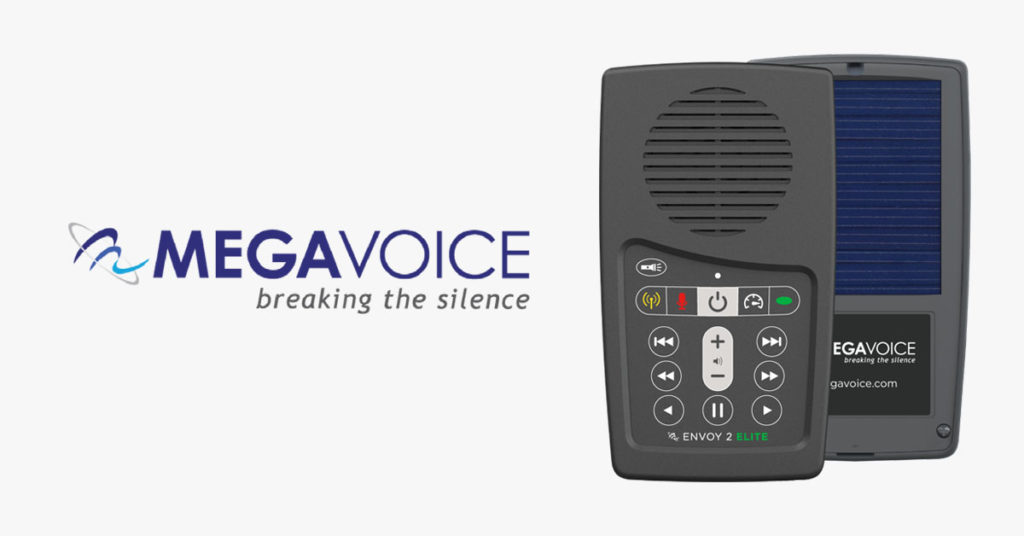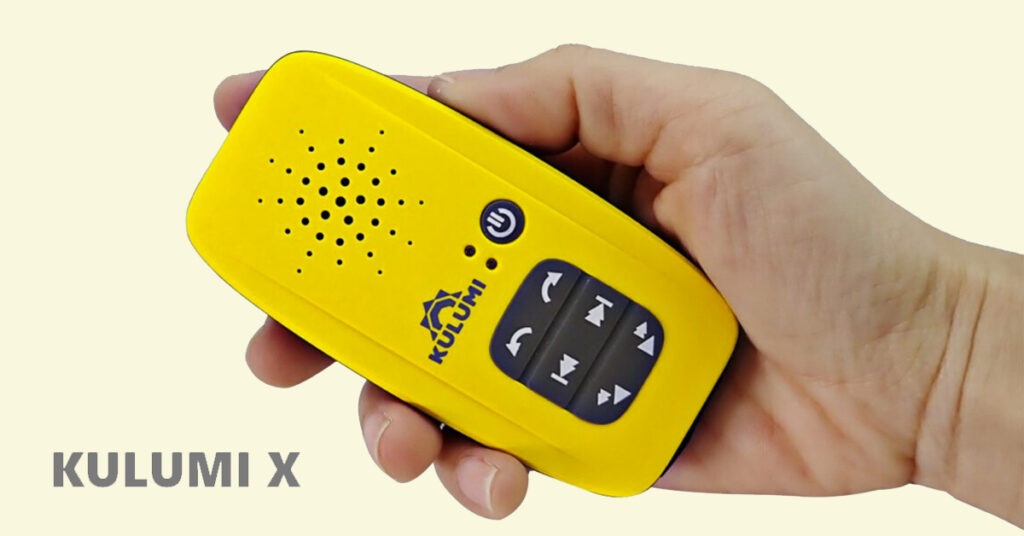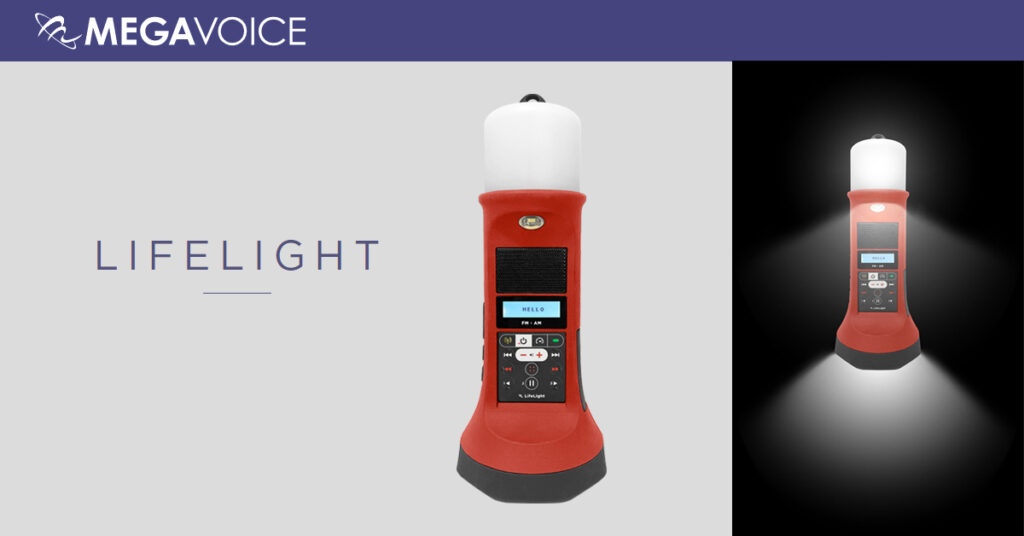
Fifth Edition – Revised for May 2024
It is not hard to convince those involved in Scripture access and Scripture engagement of the value of listening to audio Scriptures. We want to assist communities in making strategic choices about how best to make them available and how best to encourage people to engage with them. One of the ways people listen to the Bible today is using a digital audio player. But since there are so many different audio players to choose from, how do we make a good choice?
This in-depth review (66 pages) compares a range of today’s digital audio players including the Proclaimers (from Faith Comes By Hearing), the Envoy 2 (from MegaVoice), the Audibible K1 (from Kivah Distributors), the Papyrus and The Torch (from Renew World Outreach), the Kulumi Mini and Lost Sheep from Hope Tech Global.

The review is presented in several sections, illustrated with photos and giving a summary of the key features, prices, pros and cons of each player. Also mentioned are feature phones, smartphones and locally available MP3 players.
The first edition of this report, in 2008, compared the Proclaimer, MegaVoice Ambassador and Saber. In 2014, we compared the Proclaimer, MegaVoice Envoy, MegaVoice Storyteller, Audibible, Papyrus and Saber. In 2019, we added the MegaVoice Envoy 2, the Torch, the Kulumi Mini and the Kulumi Sheep.
Since 2019, we have seen the following trends:
- More features and fewer features: While we have seen players being released or upgraded with additional features, there has been an increasing realisation that more features is not necessarily better, especially if it puts up the unit price of a player and the associated shipping costs. For this reason, we are seeing organizations offering cheaper or more simple versions of their players (e.g. the MegaVoice Companion or Pathway, and the Kulumi X), which are more economical when purchased in bulk quantities.
- Local availability of digital audio players: A portable radio or speaker that you can buy in the local shops often has a memory card or a USB slot that you can use to play digital audio files. Some are now available with a built in solar panel. Although they can be less durable, provide fewer levels of file navigation and do not protect content from being changed or modified, they do offer a possible alternative to importing audio players from overseas. This can be attractive option when funds are limited, when getting shipments through customs is difficult, and when the focus is on local sustainability.
- Most people have a phone which plays media: A large proportion of the world’s population have their own personal audio player (a feature phone or smartphone) that they carry with them everywhere. Later in this report we consider the advantages and disadvantages of using a phone as an audio player. Perhaps the biggest reason for opting for a dedicated audio player rather than a phone for listening to the Bible is similar to the reason for using a printed Bible rather than one on your phone: it allows you to focus on one thing and avoid being distracted.
- Players with lamps and flashlights/torches: Several organisations have integrated a light into their player. This includes the Kulumi Mini, MegaVoice Envoy, The Torch, and more recently the MegaVoice LifeLight (which includes a lamp, a torch and a reading light).
- Digital displays: Early versions of the Proclaimer from Faith Comes By Hearing included a digital display, but these disappeared in subsequent versions – and most other players did not include a display. This is likely because of cost. Now we are seeing the return of the display screen on selected models, for example in the MegaVoice LifeLight, the MegaVoice Envoy 3 and the Digital Bible Society’s Pearl players.
- Collaboration: Organisations are working together more in design, manufacturing and distribution. They are increasingly using each other’s devices or software rather than always seeing the need to do something on their own. For example, MegaVoice, Renew World Outreach and Kulumi (Hope Tech Global) are using the SaberCopy software, developed by Global Recordings Network.
- More capacity: As memory has become cheaper, audio players are seeing an increasing amount of built-in memory. This means that they have the capacity to contain more content and better-quality audio. There is less need to compress audio files to make them as small as possible.
- Durability and better battery life: Today’s audio players are more durable than their predecessors. This means better build quality and improved battery technology. In the past, one of the biggest complaints about audio players was the problem of dead batteries after a few months of use. The batteries being used today have a much longer shelf life and will last for longer.
- USB charging: In the past, players would come with a proprietary charging unit, which could be an additional cost. Now, players are charged using standard USB cables. The latest players have USB-C ports, which is becoming the standard for electronic devices in much of the world. MegaVoice is switching all their units over to the USB-C type connectors by the end of 2024.
- Power banks: Some of the players are becoming charging sources themselves (The Torch, Kulumi Mini, MegaVoice LifeLight, MegaVoice Solar Speaker). They act as power banks from which you can charge your phone.
- Multilingual players: There is a trend to see multiple languages on a single player, e.g. translations of the Bible in a selection of languages – very useful for multilingual contexts.
- Easier content loading with MP3 files: In the past, some players required less than common audio file formats, meaning that you had to run file conversion and compression programs before uploading new content. Now most players take standard MP3 files and uploading content is much easier.
- Players for children: The MegaVoice Wildlife Storytellers and the Kulumi Sheep have been designed especially for children.
- Digital file creation and sharing: In most countries of the world, people are interacting with digital media and are familiar with memory cards and MP3 audio files. Not only do they consume this media themselves, but they are creating media, and sharing it with their friends who share it with their friends, and so on.
Download the full report as a PDF document:
![]() Which Audio Player (Richard Margetts, Fifth Edition, May 2024)
Which Audio Player (Richard Margetts, Fifth Edition, May 2024)







